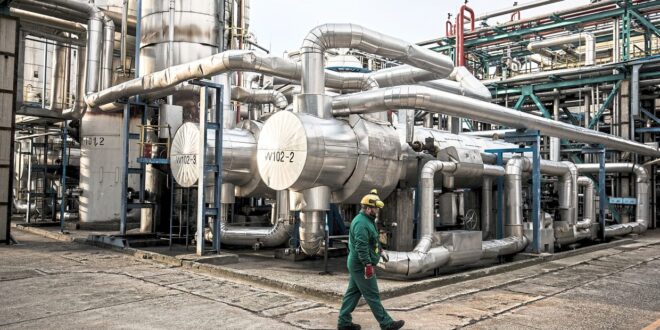LONDON: When the world’s top gas traders met in late April at a canal-side hotel on the outskirts of Amsterdam, the atmosphere was business-as-usual: coffee, croissants and wrangling over deals for the upcoming winter.
Then came news of a leak at Europe’s biggest liquefied natural gas plant, located above the Arctic circle in Norway.
The problem – discovered during a planned test of the facility’s safety systems – was quickly repaired, but not before it caused a momentary spike in the price of natural gas.
Back in the Netherlands, it served as an uncomfortable reminder of the power of a single company, Equinor ASA.
In the more than two years since Russia invaded Ukraine, sending energy prices soaring, the Norwegian oil and gas giant has quietly picked up the crown that once belonged to Russia’s Gazprom PJSC.
Norway now supplies 30% of the bloc’s gas; Gazprom provided about 35% of all Europe’s gas before the war. And of the more than 109 billion cubic m of natural gas Norway exported to Europe last year –enough to power Germany until 2026 –roughly two-thirds was marketed and sold by Equinor.
So long as the bloc continues to depend heavily on fossil fuels, Norwegian hydrocarbons will be essential to keeping the lights on in Europe.
Equinor’s visibility “dramatically changed with reduced flows from Russia,” said Irene Rummelhoff, the company’s head of midstream, marketing and processing. “There was a point in time where (Europe) almost took us for granted. That is no longer the case.”
The company’s new prominence has also raised questions about whether European leaders are, once again, putting their countries at risk by relying too heavily on a single supplier.
Although Norway is perceived as a steady trading partner with a long and consistent history of delivering energy to Europe, extended outages and its handling of maintenance challenges, both of which affect energy prices, have had ripple effects across the continent.
Part of the company’s good fortune has to do with a broader shift in Europe’s relationship to fossil fuels, Thina Margrethe Saltvedt, chief analyst for sustainable finance at Nordea Bank Abp, said in an interview.
Five years ago, “there was a lot of talk about the green transition and how we were starting to see the oil and gas industry sunset,” she said.
“Then Covid happened, then the war in Ukraine, and now you simply don’t see it anymore. The focus has turned to energy security.”
The notion that gas won’t disappear anytime soon, a view strongly endorsed by the gas industry, has thrust Norway to the centre of the conversation around securing Europe’s energy resources.
German Economy Minister Robert Habeck – who is also in charge of climate policy in the region’s biggest economy – made an official visit to Oslo in early January 2023.
Commission president Ursula von der Leyen travelled two months later to Norway’s Troll natural gas field, which provides 10% of the continent’s supplies.
European Union (EU) energy czar Kadri Simson has also visited Norway twice in the past two years.
Speaking at an event in the Norwegian capital in March, Simson told a hall filled with the country’s oil and gas elite that “the EU continues to count on Norway as a partner for conventional sources,” and offered her appreciation for its help during the energy crisis.
Because Norway’s gas prices are higher than Russia’s, there was some fuming after Russian exports shrank about Norway benefiting at Europe’s expense.
But criticism abated as governments and traders accepted the new market conditions. The non-EU member has never been shy about the importance it places on gas – Norway has long advocated that gas should place a central role in the bloc’s green transition – and now it is finding more willing counterparts.
In late April, German chancellor Olaf Scholz thanked Norway for enabling his country to become independent of Russian gas “within just a few months,” and praised it as “the perfect partner” for securing Germany and Europe’s supply.
Norway’s new role as gas purveyor to Europe has been very profitable – gas exports hit a record high of 1.4 trillion kroner in 2022 – but it has also cast a question mark over Norway’s green future.
While the country has become a leader in initiatives like the transition to electric vehicles, the recent surge in demand for gas has had the effect of redirecting financial resources and talent back into the oil and gas sector.
Organisations such as Greenpeace have expressed concern that Europe’s embrace of Norwegian gas could come at the expense of the broader green transition. And for traders, going all in on Equinor brings a different set of problems.
Equinor’s growing relevance in Europe came into sharp focus last summer, when the company announced that maintenance at some of its biggest gas facilities was being extended. Within minutes, gas prices rose almost 20%.
The response was especially intense as traders had mostly been betting that prices would slump. Sluggish demand and the fact that the region’s gas inventories would be full by the end of the summer had led them to think that Europe had finally gotten over the worst of the energy crisis.
Unusually hot weather on the continent, which normally increases energy use, amplified concern. The outages reduced Norway’s exports for a few weeks and prompted trading desks to weigh the “Equinor maintenance affect” more heavily. — Bloomberg
 BeritaKini.biz Berita Viral Terkini di Malaysia
BeritaKini.biz Berita Viral Terkini di Malaysia





